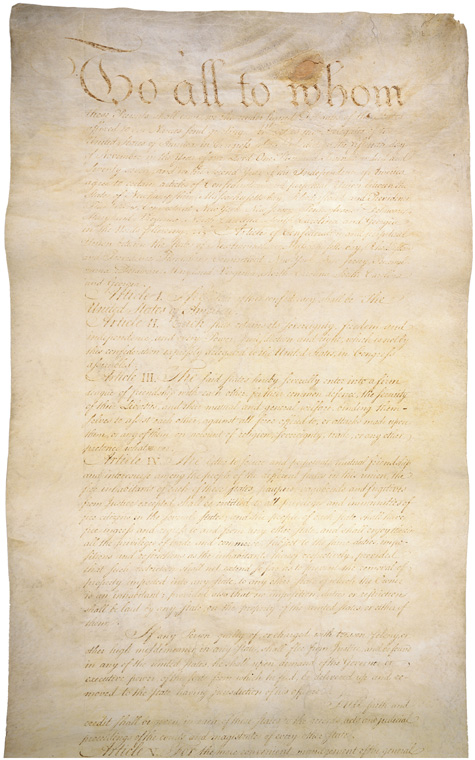Articles of Confederation was the agreement under which the 13 original states established a federal government in 1781. The states called their confederation the United States of America, continuing the name used in the Declaration of Independence. The Articles of Confederation served as the new nation’s basic charter of government until the first government under the Constitution of the United States was formed in 1789. The Congress of the Confederation operated the government under the Articles of Confederation.

The Articles attempted to balance the need for an effective national government with the traditional independence of each state. The document guaranteed each state sovereignty and granted each state one vote in Congress. Under the Articles, Congress could not levy taxes, regulate trade, or force states to fulfill their obligations. However, the Articles did allow Congress to declare war and peace, manage foreign relations, establish and command an army and navy, and issue and borrow money.
The Second Continental Congress drafted the Articles of Confederation. Richard Henry Lee of Virginia first proposed the establishment of a confederation in the Congress on June 7, 1776. Congress appointed a committee to draw up a plan of union. Within a month, John Dickinson of Pennsylvania prepared a first draft. On Nov. 15, 1777, Congress adopted a final version. By 1779, all the states except Maryland had ratified (approved) it. Maryland withheld its approval until Virginia, New York, and other states had agreed to give Congress title to lands the states had claimed northwest of the Ohio River. The states promised to do so, and Maryland approved the Articles on March 1, 1781. The Articles went into effect on that date.
Even at the time the Articles went into effect, many national leaders thought that the agreement did not give Congress enough power to operate effectively. But amendments were difficult to pass because all 13 states had to approve them. By 1786, James Madison, Alexander Hamilton, and others were convinced that a general convention was needed to make changes in the Articles. In September 1786, delegates from five states met at Annapolis, Maryland, and proposed that such a convention meet in Philadelphia in May 1787. Eventually, every state approved the proposal except Rhode Island.
The Constitutional Convention quickly agreed that the Articles had to be abandoned. The convention delegates wrote an entirely new document to replace the Articles—the Constitution of the United States. The Constitution greatly increased the power of Congress. It was ratified in June 1788.
